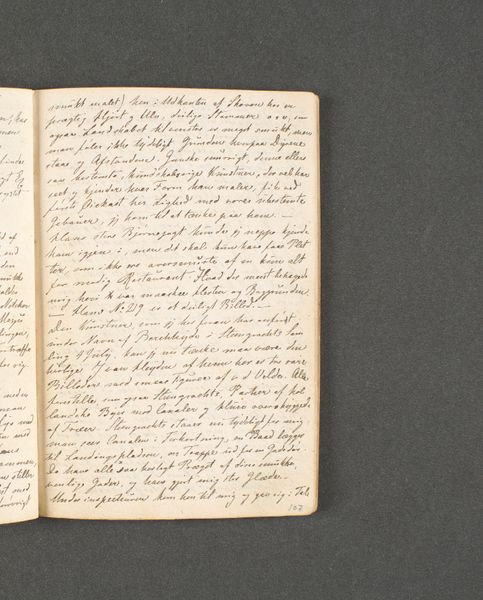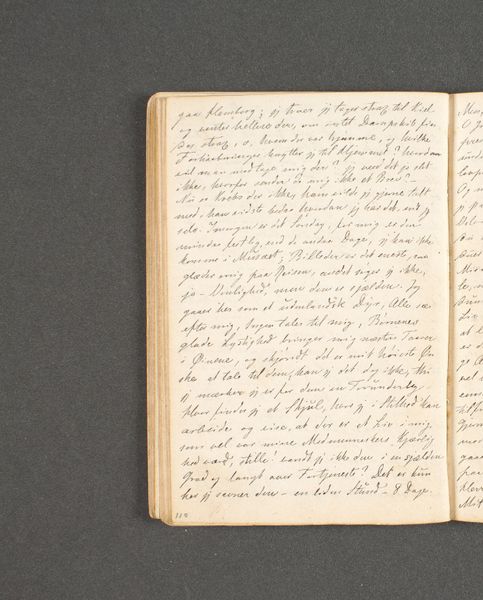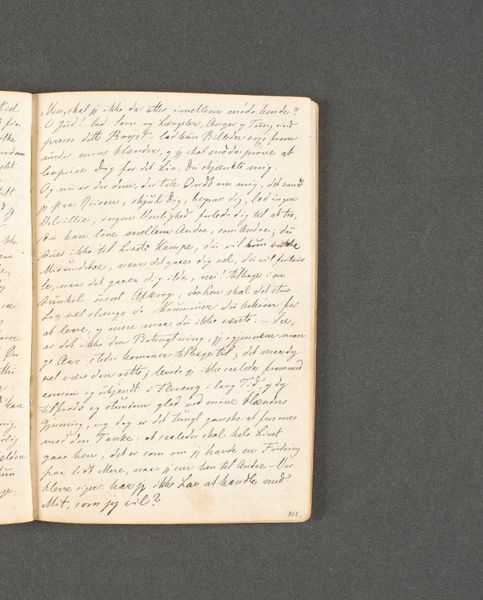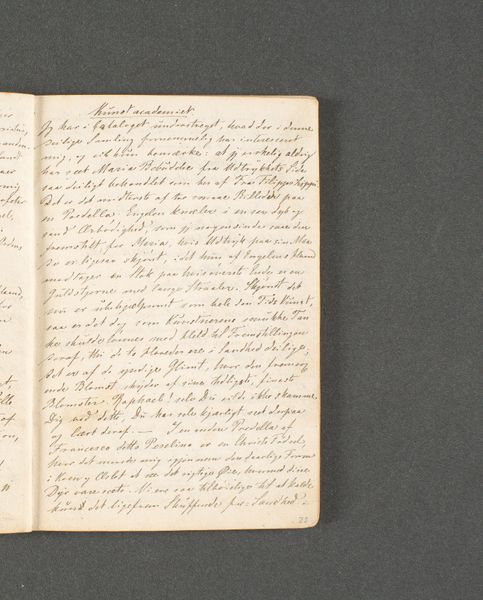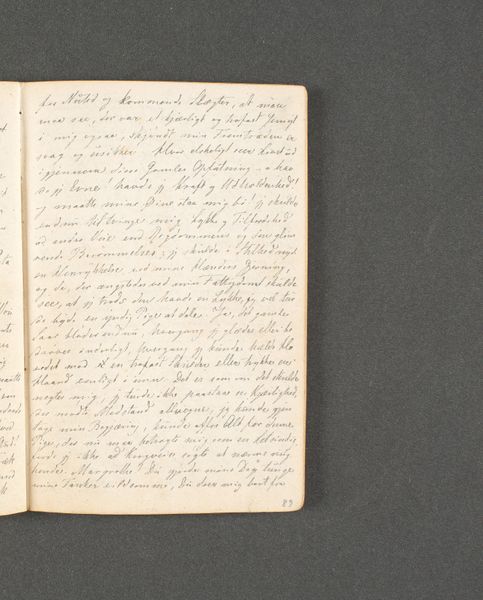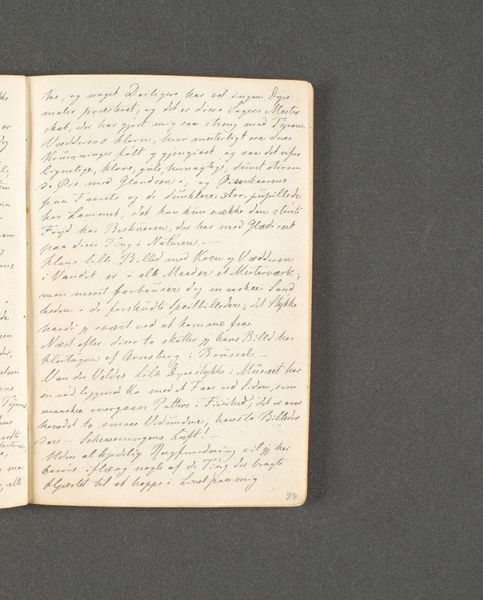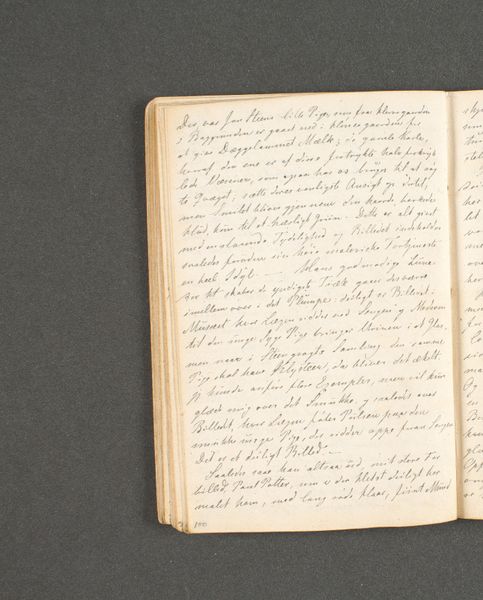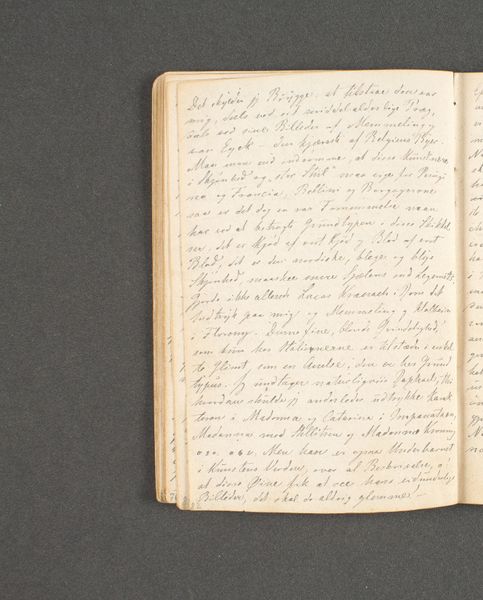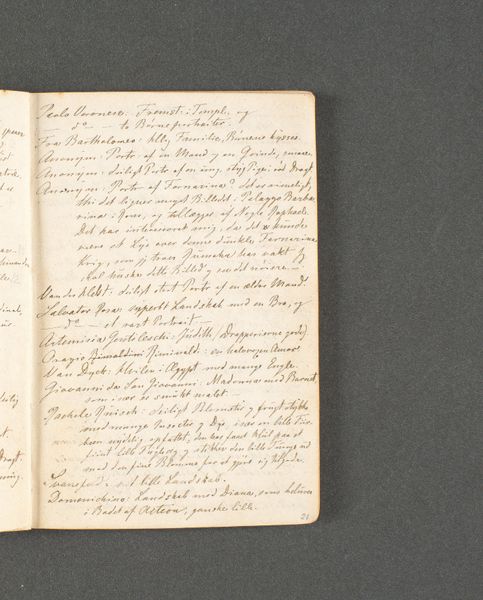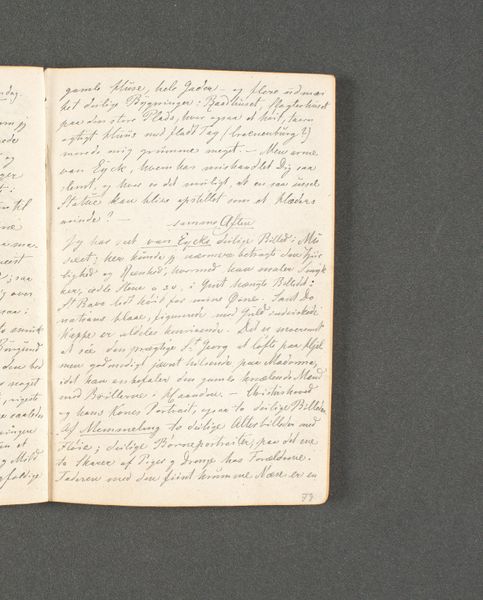
drawing, paper, pen
#
portrait
#
drawing
#
narrative-art
#
paper
#
intimism
#
romanticism
#
pen
Dimensions: 131 mm (height) x 89 mm (width) (bladmaal)
Editor: Johan Thomas Lundbye’s “Rejsedagbog. Amsterdam” from 1846. It's a page of dense handwriting, filling the surface, a peek into the artist's mind. It almost feels like a private diary entry we shouldn't be reading. What visual elements jump out at you? Curator: Note the contrast and density inherent in the piece. The composition directs our gaze solely toward the inscription, which itself resists any ease of interpretation. Are we meant to linger on individual words or perceive the work more as a whole? Editor: I initially focused on trying to decipher individual words, but the script is difficult, so the whole page then becomes like a textured pattern, which seems intentional. It forces me to see language as form. Curator: Indeed, the aesthetic effect is achieved via what linguists term the signifier and the signified. What we have are forms, signs, striving for a clear message, yet becoming their own plane of experience. Do you feel this undermines or strengthens the piece's capacity for expression? Editor: I think it strengthens it, in an odd way. The struggle to understand mirrors perhaps the artist's own process of observation and reflection, creating a bond. It’s both intimate and detached. Curator: An astute assessment. By resisting immediate consumption, the artwork insists upon a more profound engagement with the underlying creative act. Editor: I learned that sometimes not understanding can be a powerful aesthetic experience in itself. Thank you. Curator: The pleasure was mine. Always approach a work prepared to be challenged by its own construction.
Comments
No comments
Be the first to comment and join the conversation on the ultimate creative platform.
